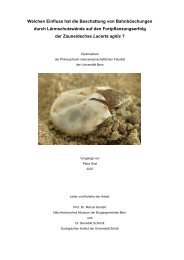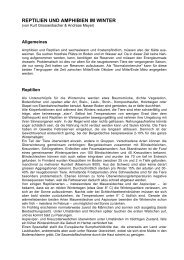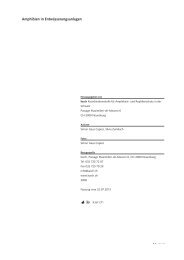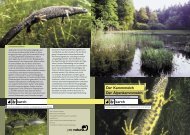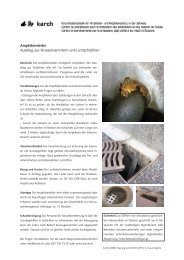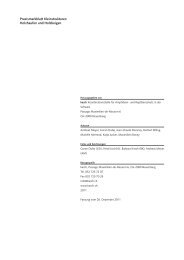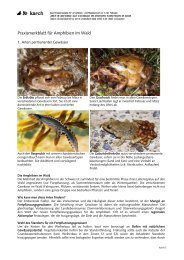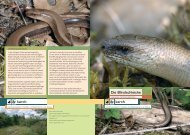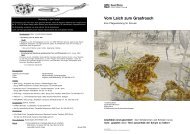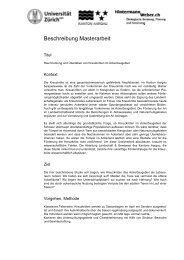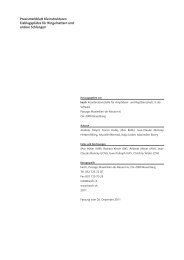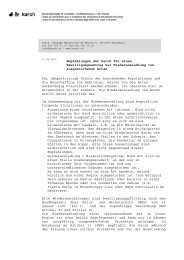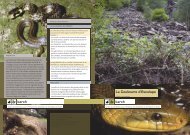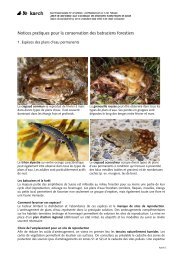Verbreitung, Ökologie und Schutz der Ringelnatter (Natrix ... - Karch
Verbreitung, Ökologie und Schutz der Ringelnatter (Natrix ... - Karch
Verbreitung, Ökologie und Schutz der Ringelnatter (Natrix ... - Karch
Erfolgreiche ePaper selbst erstellen
Machen Sie aus Ihren PDF Publikationen ein blätterbares Flipbook mit unserer einzigartigen Google optimierten e-Paper Software.
Voraussetzungen möglich – am ehesten im Fall überwiegen<strong>der</strong> Gründe des<br />
Gemeinwohls.<br />
WILHELM BREUER, Plathnerstr. 64, D-30175 Hannover<br />
DE WIJER, PIETER<br />
Seasonal and ontogenetic variation in the diet of immature grass<br />
snakes (<strong>Natrix</strong> natrix) near Amsterdam, The Netherlands<br />
The food habits of the grass snake (<strong>Natrix</strong> natrix) have been studied reasonably well in<br />
different parts of its range in Europe (GREGORY & ISAAC, 2004). However, these studies<br />
concern mostly mature animals while detailed quantitative data on the diet of immature<br />
grass snakes is lacking. Information on the food habits of immature snakes is important<br />
because diet during early life stages influences growth, survival and age and size at<br />
first reproduction. Here I present the results of a study regarding the diet of immature<br />
grass snakes near Amsterdam, The Netherlands, which was carried out from 2000 to<br />
2003.<br />
The main prey items were immature smooth newts (Triturus vulgaris) and immature<br />
common toads (Bufo bufo). Although green and common frogs (Rana kl. esculenta and<br />
R. temporaria) were (very) common at the study sites they constituted only a minor part<br />
in the diet. Neither invertebrates nor amphibian larvae were regurgitated. There was an<br />
ontogenetic shift in the diet from immature newts and toads to toad (sub)adults. Prior to<br />
their first hibernation, and after their first hibernation up to the following onset of toad<br />
metamorphosis, neonate grass snakes ate almost exclusively immature newts. The<br />
absence of immature anurans in the diet of neonate snakes is probably a result of<br />
gape-limitation. Newt efts were taken consistently throughout the season while from<br />
June onwards immature snakes preyed heavily upon the newly emerged toads and<br />
newts. The diet composition fo<strong>und</strong> in the present and other studies suggest that grass<br />
snakes are much more terrestrial than aquatic hunters.<br />
PIETER DE WIJER, Dept. of Herpetology, Zoological Museum, University of Amsterdam,<br />
P.O. Box 94766, NL-1090 GT Amsterdam; P.deWijer@uva.nl<br />
5



